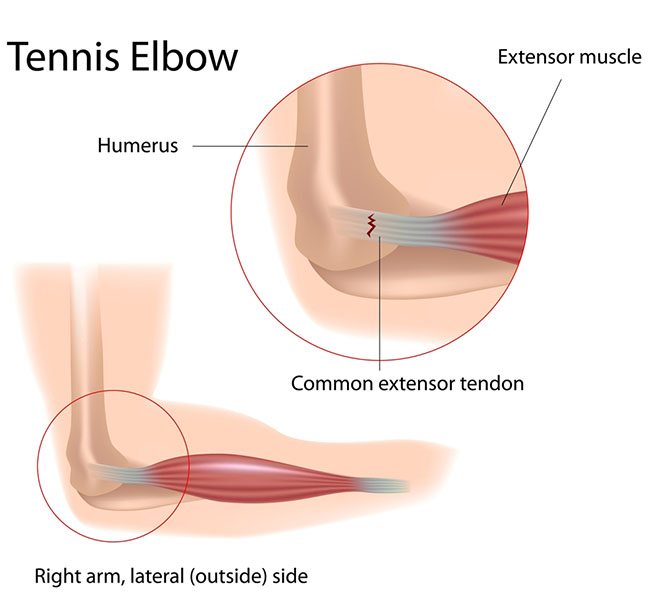If you’ve ever suffered from tennis elbow, you’ll know that the sore, hot pain on the outside of the elbow can be difficult to bear when you’re performing regular, everyday activities like picking things up or typing on a computer. But while the condition is called “tennis elbow”, it doesn’t just affect tennis players, and it isn’t just felt in the elbow.
Tennis elbow stems from overuse of the forearm muscles that extend the wrists and fingers. The tendon that connects the forearm muscles to the outer elbow is called the extensor tendon, and it’s the irritation and inflammation of the extensor tendon that causes pain. The condition often develops gradually over time as overuse occurs and inflammation of the tendon gets progressively worse. Common signs you have tennis elbow include:
- Pain with gripping and picking things up
- Decreased grip strength
- Pain when pressing the lateral epicondyle and nearby muscles
- Pain with resisted wrist and finger extension (upward movements)
- Elbow pain when stretching the wrist into flexion (downward movement)
- Soreness and stiffness in the neck
- Nerve irritation
What to Do About It
Physiotherapy treatments have been proven effective in treating tendon pain and overuse injuries including tennis elbow. Physiotherapy can:
- Relieve tennis elbow pain
- Relieve tendon pain
- Restore joint function
- Restore joint range of movement
Self-treating tendon pain can be risky as other factors such as neck pain and nerve irritation influence tennis elbow pain and need to be treated appropriately. We encourage anyone suffering from tennis elbow to see a physiotherapist before beginning any treatment. Some things your physiotherapist might do to treat tennis elbow include:
- Teach you rehabilitation and conditioning exercises (which may include clinical Pilates) and stretches
- Taping or bracing
- Suggest anti-inflammatories
- Ice or heat treatment
- Soft tissue massage
- Dry needling (acupuncture) in surrounding muscles
- Treat neck pain that may be influencing your tennis elbow pain
- Reduce nerve sensitivity and irritation
Not all of these treatments will work in all cases. It’s best to get a full and thorough assessment from a qualified physiotherapist who can carry out treatment and recommend the appropriate method for relief of the tendon pain. In the meantime, heat and ice treatments are effective ways to reduce pain, which you can safely do at home. Ice massage (being careful to not cause ice-burn) over the site of pain, and applying heat to the forearm muscles, may help reduce pain.
At star physio, we have two physiotherapists who have PhDs in tendinopathy and the associated tendon pain. If you’re suffering from tennis elbow, or any other tendon or joint pain, book a session with one of our highly qualified therapists and get your joints moving, pain-free today. Call 08 9481 1003 to book an appointment or fill out our quick online form for enquiries.

